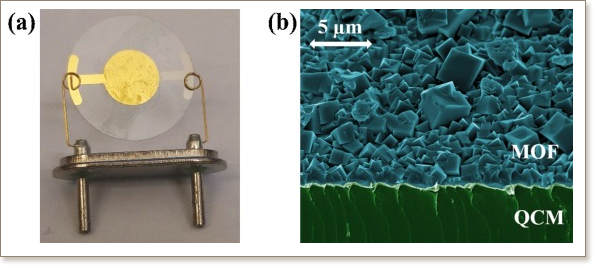


The application of metal-organic frameworks (MOFs) as a sensing layer has been attracting great interest over the last decade, due to their uniform properties in terms of high porosity and tunability, which provides a large surface area and/or centers for trapping/binding a targeted analyte. Here we report the fabrication of a highly sensitive humidity sensor that is based on composite thin films of HKUST-1 MOF and carbon nanotubes (CNT). The composite sensing films were fabricated by spin coating technique on a quartz-crystal microbalance (QCM) and a comparison of their shift in resonance frequencies to adsorbed water vapor (5 to 75% relative humidity) is presented. Through optimization of the CNT and HKUST-1 composition, we could demonstrate a 230% increase in sensitivity compared to plain HKUST-1 film. The optimized CNT-HKUST-1 composite thin films are stable, reliable, and have an average sensitivity of about 2.5×10−5 (Δf/f) per percent of relative humidity, which is up to ten times better than previously reported QCM-based humidity sensors. The approach presented here is facile and paves a promising path towards enhancing the sensitivity of MOF-based sensors.